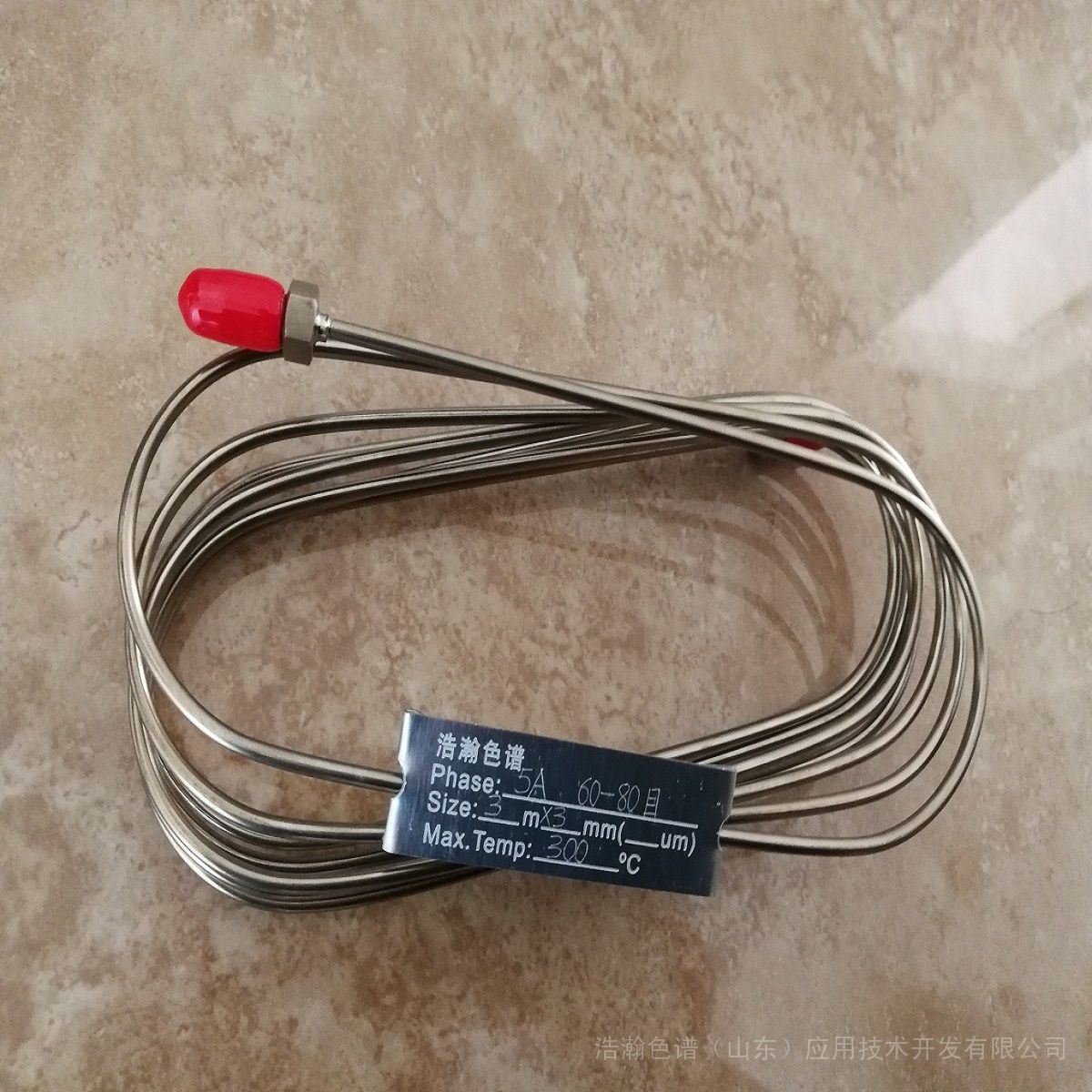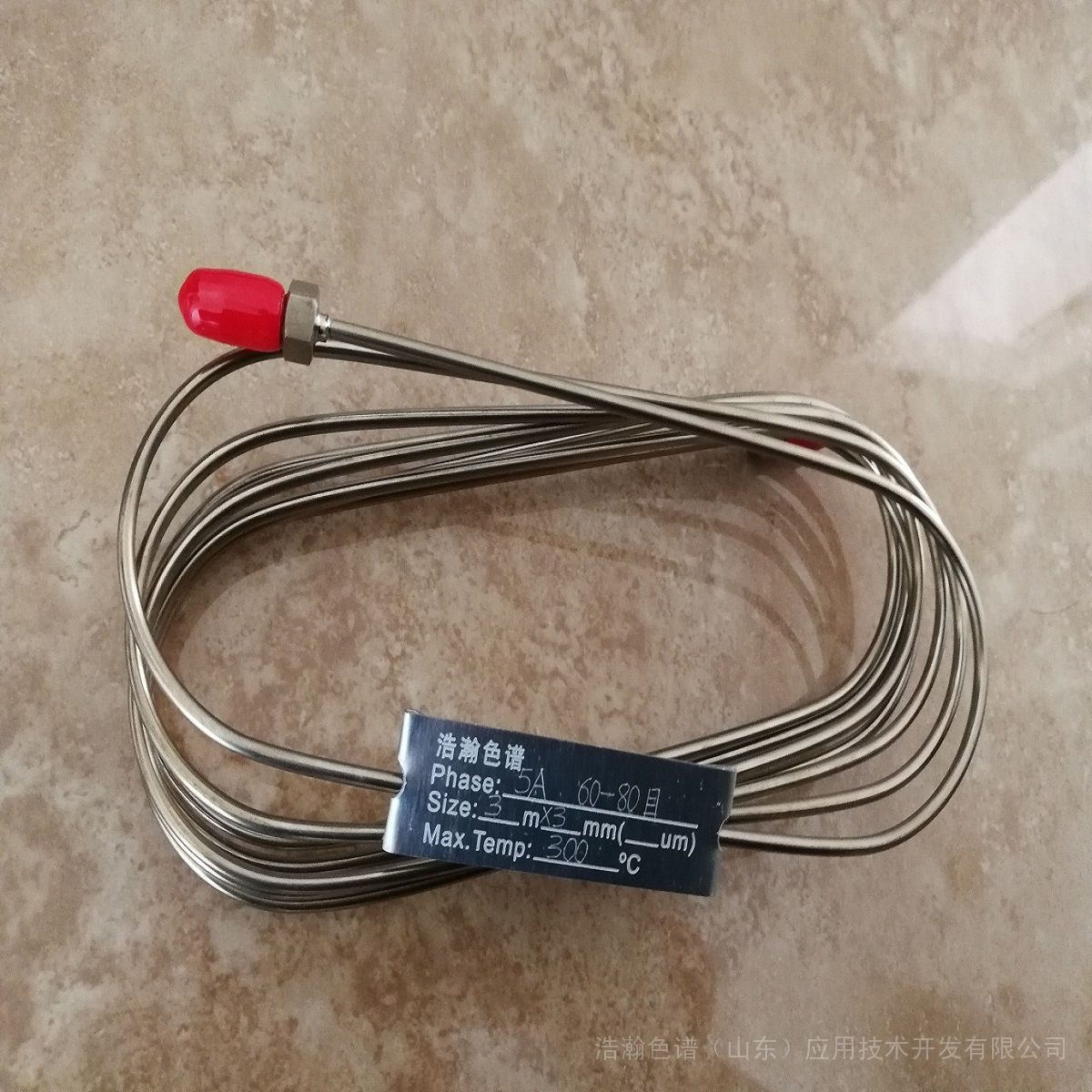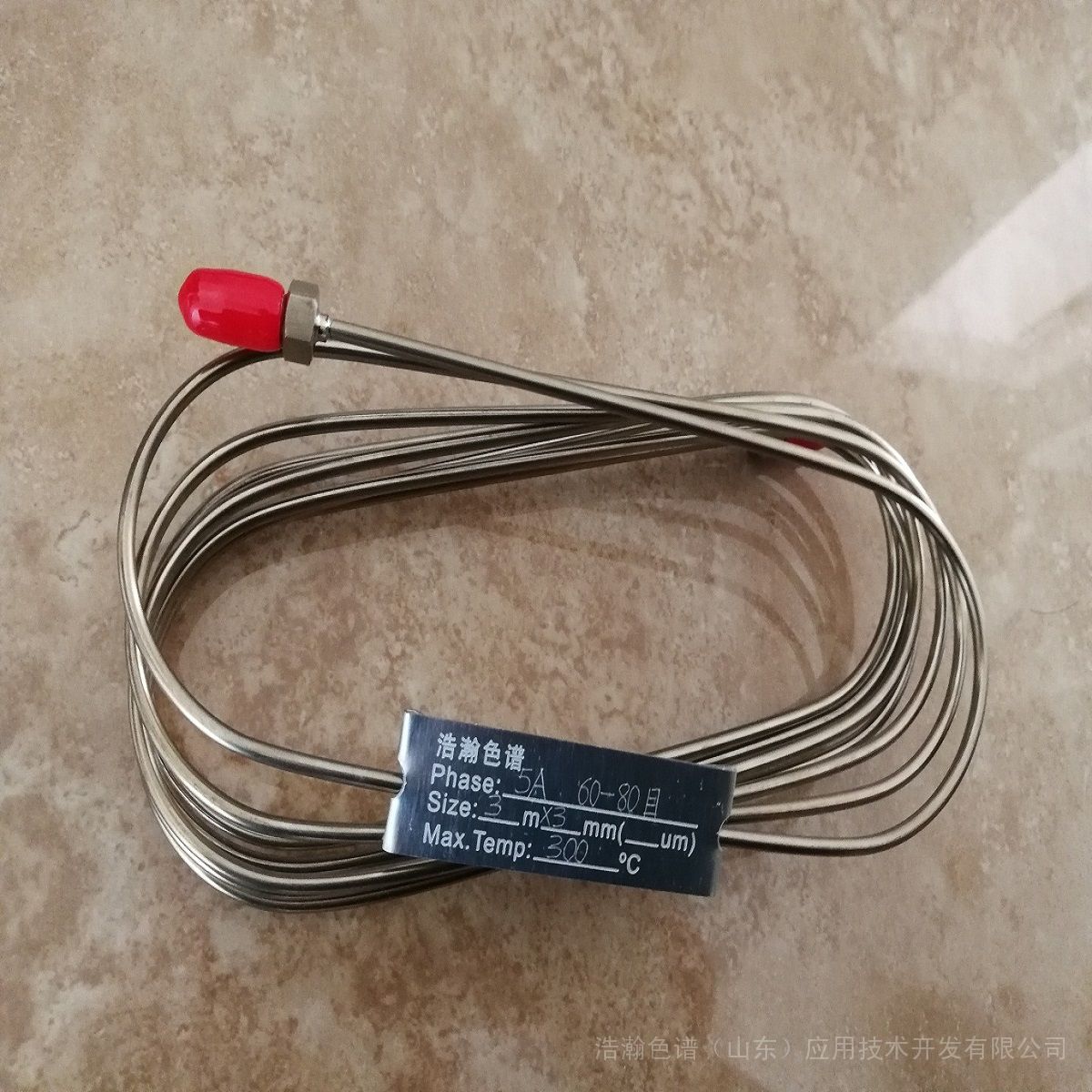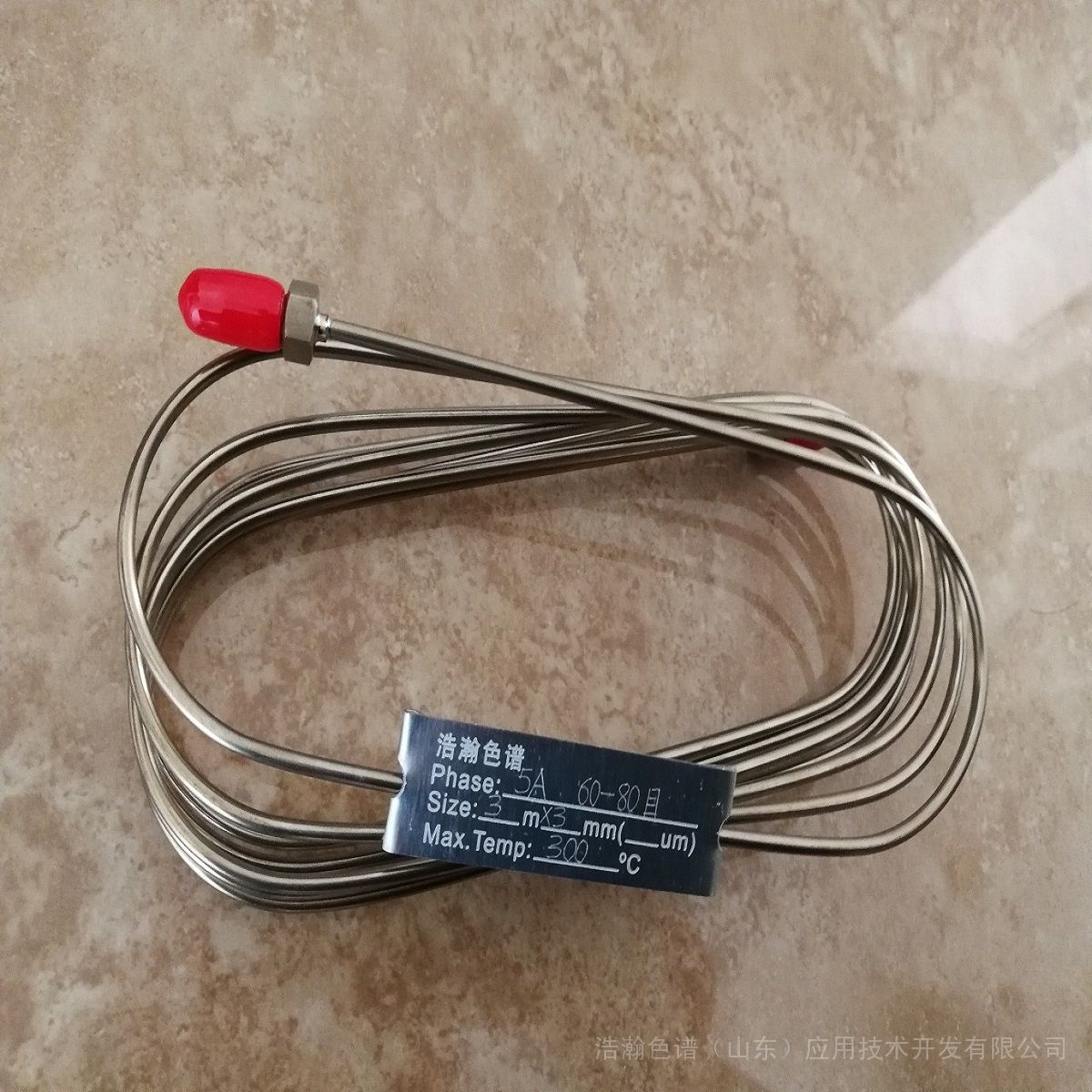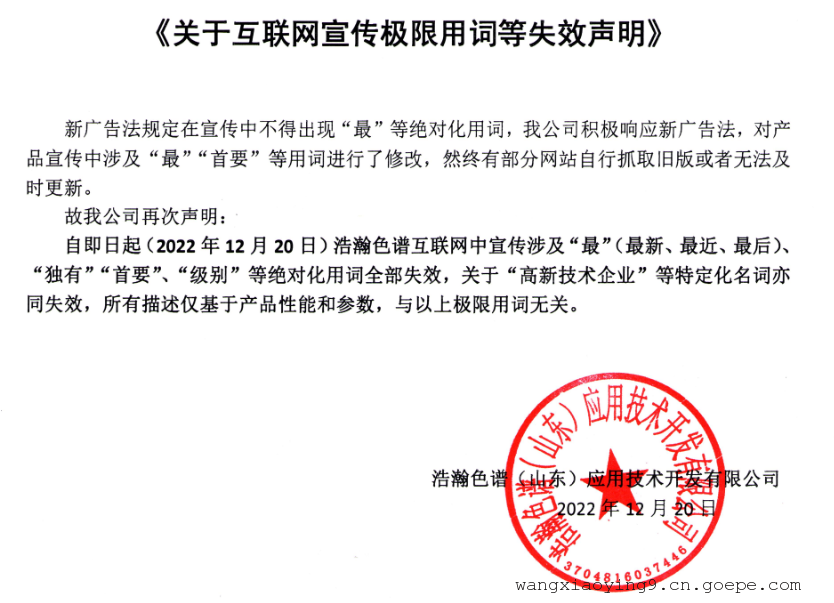HJ/T 36-1999 固定污染源排气中丙烯醛的测定 气相色谱法
1 适用范围
1.1 本标准适用于固定污染源有组织排放和无组织排放的丙烯醛测定。
1.2 本标准的检出限为0.1mg/m3,当进样量为1ml时,定量测定的浓度范围为0.31~1.0×102mg/m3。
2 方法原理
丙烯醛(CH2CHCHO)直接进样,在色谱柱中与其它物质分离后,用氢火焰离子化检测器测定,以标准样品色谱峰的保留时间定性、峰高定量。
3 引用标准
下列标准所包含的条文,通过在本标准中引用而构成为本标准的条文。
GB 16297-1996 大气污染物综合排放标准
GB 16157-1996 固定污染源排气中颗粒物测定和气态污染物采样方法
4 试剂和材料
4.1 丙烯醛:分析纯,经全玻璃蒸馏装置蒸馏,取52.5℃馏分。
4.2 丙烯醛标准气
4.2.1 标准气的配制
将大玻璃配气瓶(5.4)密封(可先加入若干片聚四氟乙烯薄片),抽气使瓶内成负压(注意:应确保瓶内残留气体不含有丙烯醛),用100μl微量注射器吸入50μl新蒸馏的丙烯醛(4. 1)后,精确称量,将此丙烯醛液体注入到配气瓶中,再精确称量,减少的重量即为丙烯醛的注入量。振摇大瓶,静置约10min后,通入氮气使大瓶内气压与大气压相等。配制成的标准气体的浓度按式(1)计算:
式中:
a-注入配气瓶中的丙烯醛质量,mg;
V-配气瓶的体积,ml;
c-丙烯醛标准气浓度,mg/m3。
4.2.2 标准气的稀释
用100ml全玻璃注射器(事先放置一聚四氟乙烯小片),抽取一定体积(按需要)的氮气或纯净空气,用硅橡胶帽密封注射口,再用一10ml全玻璃注射器抽取一定体积配制好的丙烯醛标准气(4.2.1),通过硅橡胶帽,定量注入100ml注射器中,密封,摇匀即可。此气体的丙烯醛浓度按(2)式计算。
名称:玻璃柱
规格:3m*4mm
粒度:60-80目
型号:GDX-502
应用:HJ/T 36-1999 固定污染源排气中丙烯醛的测定 气相色谱法
HJ/T 36-1999 Determination of acrolein in exhaust gas from stationary pollution sources-Gas chromatography
1 Scope of application
1.1 This standard is applicable to the determination of acrolein in organized and unorganized emissions from stationary pollution sources.
1.2 The detection limit of this standard is 0.1mg/m3. When the injection volume is 1ml, the concentration range of quantitative determination is 0.31~1.0×102mg/m3.
2 Principles of the method
Acrolein (CH2CHCHO) was directly injected into the sample, and after being separated from other substances in the chromatographic column, it was measured with a hydrogen flame ionization detector, and the retention time of the chromatographic peak of the standard sample was used for qualitative determination and peak height for quantitative determination.
3 Reference Standards
The following standards contain provisions which, through reference in this standard, constitute provisions of this standard.
GB 16297-1996 Comprehensive emission standard of air pollutants
GB 16157-1996 Determination of particulate matter in exhaust gas from stationary pollution sources and sampling methods for gaseous pollutants
4 Reagents and Materials
4.1 Acrolein: analytically pure, distilled through an all-glass distillation device, and the fraction at 52.5°C was taken.
4.2 Acrolein standard gas
4.2.1 Preparation of standard gas
Seal the large glass gas distribution bottle (5.4) (you can add several teflon sheets first), pump air to make the bottle into negative pressure (note: make sure that the residual gas in the bottle does not contain acrolein), use a 100μl micro syringe After inhaling 50 μl of freshly distilled acrolein (4.1), accurately weigh it, inject this acrolein liquid into the gas distribution bottle, and then accurately weigh it, and the reduced weight is the injection amount of acrolein. The large bottle was shaken, and after standing for about 10 minutes, nitrogen was introduced to make the pressure in the large bottle equal to the atmospheric pressure. The concentration of the prepared standard gas is calculated according to formula (1):
In the formula:
a- the mass of acrolein injected into the gas cylinder, mg;
The volume of V-dispensing cylinder, ml;
Standard gas concentration of c-acrolein, mg/m3.
4.2.2 Dilution of standard gas
Use a 100ml all-glass syringe (place a teflon piece in advance) to extract a certain volume (as needed) of nitrogen or pure air, seal the injection port with a silicone rubber cap, and then use a 10ml all-glass syringe to extract a certain volume of the prepared Acrolein standard gas (4.2.1) is quantitatively injected into a 100ml syringe through a silicone rubber cap, sealed and shaken well. The acrolein concentration of this gas is calculated according to the formula (2).
name: glass column
Specifications: 3m*4mm
Granularity: 60-80 mesh
Model: GDX-502
Application: HJ/T 36-1999 Determination of acrolein in exhaust gas from stationary pollution sources-Gas chromatography
 扫一扫,手机浏览
扫一扫,手机浏览
